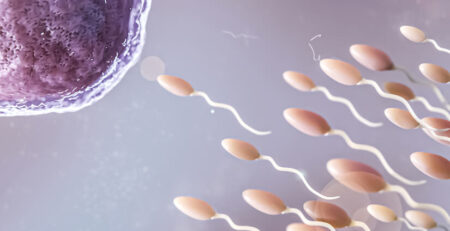The Role of Semen Analysis in Male Infertility Treatment
Infertility can be a challenging journey for many couples, and often, the focus is predominantly on the female partner. However, male infertility is a significant factor in nearly 50% of infertility cases. Understanding and addressing male infertility is extremely important, and this is where semen analysis plays a vital role.
Let’s explore the importance of semen analysis in male infertility treatment and how it can guide couples toward successful conception.
What is Semen Analysis?
Semen analysis is a laboratory test that evaluates the health and viability of a man’s sperm. It examines several parameters, including sperm count, motility (movement), morphology (shape), and other vital factors. This comprehensive evaluation helps fertility specialists determine if there are any issues with the sperm that could be affecting a couple’s ability to conceive.
Key Parameters Assessed in Semen Analysis
Sperm Count: This measures the number of sperm present in a given sample. A low sperm count can significantly reduce the chances of fertilizing an egg.
Sperm Motility: This assesses the sperm’s ability to move efficiently. Poor motility can hinder the sperm’s journey to the egg, making conception difficult.
Sperm Morphology: This examines the shape and structure of the sperm. Abnormal morphology can affect the sperm’s ability to penetrate and fertilize the egg.
Volume and Viscosity: The amount of semen produced and its thickness can also impact fertility. Abnormalities in these factors might indicate underlying health issues.
pH Level: The pH level of semen can influence sperm function. Abnormal pH levels might suggest infections or other medical conditions.
Fructose Levels: Semen contains fructose, which provides energy for sperm. Low fructose levels can impact sperm motility.
Why is Semen Analysis Crucial in Male Infertility Treatment?
Semen analysis provides invaluable insights that help pinpoint the exact cause of male infertility. This comprehensive evaluation of sperm parameters offers a detailed picture of a man’s reproductive health, enabling targeted treatments to be developed.
Here’s an in-depth look into why semen analysis is essential and how it guides the course of male infertility treatment.
1- Identifying Low Sperm Count (Oligospermia)
Sperm count is one of the primary parameters assessed during semen analysis. A normal sperm count is typically over 16 million sperm per millilitre of semen. Oligospermia, or low sperm count, can significantly reduce the chances of natural conception. Identifying oligospermia through semen analysis allows for interventions such as lifestyle changes (e.g., improving diet, reducing stress, avoiding toxins), medications to stimulate sperm production, or assisted reproductive techniques (ART) like intrauterine insemination (IUI) or IVF.
2- Evaluating Sperm Motility (Asthenozoospermia)
Sperm motility is the ability of sperm to move efficiently. For conception to occur, sperm must travel through the female reproductive tract to reach and fertilize the egg. Semen analysis evaluates the percentage of motile sperm and their movement quality (progressive and non-progressive motility). Asthenozoospermia, or poor sperm motility, can hinder this journey, making natural conception difficult. Treatments may include antioxidants to reduce oxidative stress on sperm or ICSI, where a single sperm is directly injected into an egg, bypassing the need for motility.
3- Assessing Sperm Morphology (Teratozoospermia)
Sperm morphology refers to the size and shape of sperm, and it is critical for the sperm’s ability to penetrate and fertilize the egg. Normal morphology is typically characterized by a certain percentage of sperm having a standard shape. Teratozoospermia, or abnormal sperm morphology, can be a significant barrier to conception. Identifying morphological defects allows for the use of ART methods like ICSI, which can select morphologically normal sperm for fertilization.
4- Volume and Viscosity
The volume of semen produced and its viscosity can impact fertility. Semen volume below 1.5 millilitres is considered low and might indicate issues with the seminal vesicles or prostate. High viscosity can impair sperm motility. These findings can lead to further investigations into underlying conditions like infections, obstructions, or hormonal imbalances.
5- pH Level
The pH level of semen typically ranges from 7.2 to 8.0. Abnormal pH levels can indicate infections or issues with the seminal vesicles. Acidic semen (pH below 7.2) may harm sperm and reduce motility, while alkaline semen (pH above 8.0) might indicate infections. Semen analysis helps identify these issues, leading to appropriate treatments such as antibiotics for infections or hormonal therapy.
IVF centres in Delhi and worldwide rely heavily on semen analysis results to tailor the most effective treatment plans for their patients. If the semen analysis indicates severe male infertility issues and the infertility treatment techniques to be applied.
Targeted Male Infertility Treatments Based on Semen Analysis
Medications
Hormonal Treatments: Hormonal imbalances can be corrected with medications to stimulate sperm production.
Antioxidants: Supplements like vitamin C, vitamin E, and coenzyme Q10 can reduce oxidative stress and improve sperm parameters.
Surgical Interventions
Varicocelectomy: Surgical correction of varicoceles (enlarged veins in the scrotum) can improve sperm count and quality.
Vasectomy Reversal: Men who have had vasectomies can undergo reversal procedures to restore fertility.
Advanced Reproductive Techniques (ART)
Intra-uterine insemination (IUI):
A simple technique which is used when there are mild male factor issues. It involves washing the semen sample and placing it inside the uterine cavity at the time of release of egg from the follicle.
In Vitro Fertilization (IVF)
When semen analysis reveals significant abnormalities, IVF may be recommended. IVF involves retrieving eggs from the female partner, fertilizing them with sperm in a lab, and transferring the resulting embryos to the uterus. Semen analysis results help determine the need for additional techniques like ICSI.
Intracytoplasmic Sperm Injection (ICSI)
ICSI is often considered one of the most effective male infertility treatments in severe cases. A single sperm is injected directly into an egg, bypassing issues with motility and morphology. This technique is particularly beneficial when sperm count is very low or when previous IVF attempts have failed.
Decision for using sperm selection techniques like Microfluidics, Physiological intracytoplasmic sperm injection (PICSI), Magnetic-Activated Cell Sorting (MACS) or need of sperm retrieval techniques like PESA ( percutaneous epididymal sperm aspiration), TESA (Testicular sperm aspiration), TESE (Testicular sperm extraction) , micro TESE depends on semen analysis report.
Advanced Reproductive Techniques (ART)
Intra-uterine insemination (IUI):
A simple technique which is used when there are mild male factor issues. It involves washing the semen sample and placing it inside the uterine cavity at the time of release of egg from the follicle.
In Vitro Fertilization (IVF)
When semen analysis reveals significant abnormalities, IVF may be recommended. IVF involves retrieving eggs from the female partner, fertilizing them with sperm in a lab, and transferring the resulting embryos to the uterus. Semen analysis results help determine the need for additional techniques like ICSI.
Intracytoplasmic Sperm Injection (ICSI)
ICSI is often considered one of the most effective male infertility treatments in severe cases. A single sperm is injected directly into an egg, bypassing issues with motility and morphology. This technique is particularly beneficial when sperm count is very low or when previous IVF attempts have failed.
Decision for using sperm selection techniques like Microfluidics, Physiological intracytoplasmic sperm injection (PICSI), Magnetic-Activated Cell Sorting (MACS) or need of sperm retrieval techniques like PESA ( percutaneous epididymal sperm aspiration), TESA (Testicular sperm aspiration), TESE (Testicular sperm extraction) , micro TESE depends on semen analysis report.












